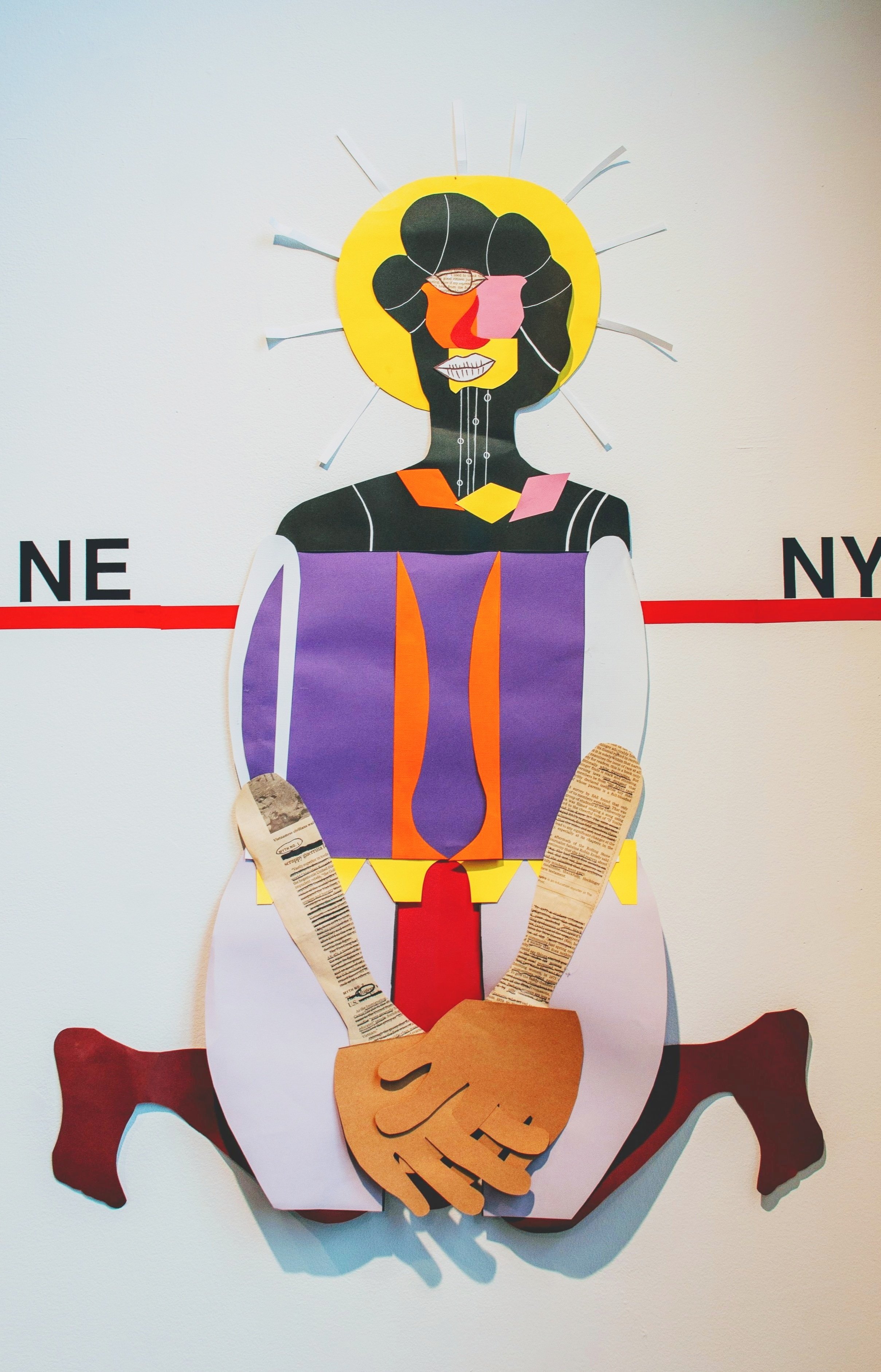NIKKI BROOKS
Mistress Circa 1787, Nikki Brooks. Paper collage, 18 x 24 in.
This was artwork centers Sallie Hemmings and the rape culture of the enslaved black woman. In the contemporary world this theme continues through social economic systems such as: current laws, housing, health care and the body. On the other end of that spectrum is my existence and so it was important to also pay homage to the strength, love, and nurturing of our ancestors. Without them there would be no me. But, just to think of what black women endured to get to me (my mother, grandmother included) is something you can't totally wrap your minds around.
This piece was immersed in an installation/multi-media show titled "From the Hold of the Ship". The NE and NY represented the states that participated in the long narrative of censoring blackness through shelter, beauty, and body. The red line highlighting the impact of redlining* as one example.
*Redlining is the policy used by the Federal Housing Administration, established in 1934, that furthered segregation efforts by refusing to insure mortgages in and near African-American neighborhoods.
Interactive Redlining Map
Nikki Brooks was born in 1975 in Brooklyn, New York, but was raised in Spotsylvania County, VA. She is a multi-disciplinary artist that works specifically in installations and assemblage that are infused with digital and audio elements, paintings, sculpted text, and collage spaces. These works encourage the viewer to connect in forms of writing, storytelling, and shared dialogue through workshops that focus on diversity, inclusion, truth- telling and lament.
Her artwork focuses on social activism and art. She creates artworks that provoke the audience to interact with the objects, images, sculptures, and writings presented in the space. Artists like Fred Wilson, Rirkrit Tiravanija, Maya Lin, and Adrian Piper have inspired and influenced the way Nikki curates her space to become this communal space for all viewers. She describes her created spaces: as “walking into one of my collages”.
Nikki describes her installations as a “collage in 3-D, a multitude of voices”. The words and teachings of the strong women in her life are the guiding light to these artworks. Juxtaposed with those teachings are artworks that are ignited from social unrest among her community and the world. The work is beyond beautiful, and Nikki layers the work so that the audience cannot just admire the ‘beauty’ aesthetic. Each painting, each digital piece, or object is a pandora's box of truth telling, and oftentimes a lived experience. Therefore, the viewer must interact within the space to get to the core meaning. Some artworks are 2-D, and other artworks are 3-D, and incorporate food. These combinations of artworks use the notion of comfort and utility as a way of inviting the viewer to interact with its functionality.
Nikki continues to create works to push tough conversations as a way of getting to know how humanity may participate in these issues, not just admire them as if they are pictures. The constant strive to get these narratives to tap into people who don’t have to participate by a privilege not granted to blackness is her constant undertaking.
